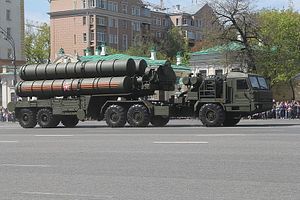As The Diplomat has extensively covered recently, the U.S. decision to implement CAATSA sanctions against China and Russia has the potential for huge fallout. On the one hand, the use of the CAATSA sanctions represents a remarkably innovative use of financial and legal muscle, one that may portend a much more active effort to disrupt how the Chinese and Russian defense industrial bases (DIBs) do their work. On the other, it represents a major threat to core tenets of sovereignty that major powers have traditionally held dear: the ability to manage their own defense acquisitions and procurement without major foreign interference. Either way, the United States has decided to escalate its competition with Russia and China in a challenging new way.
To recap, the United States is flexing its financial muscles in order to limit the ability of the DIBs of competitor countries to do business. Moreover, it is doing so in an openly arbitrary fashion; Secretary of Defense James Mattis has already asked that India, Indonesia, and Vietnam not suffer sanctions preventing the acquisition of U.S. equipment. Bonnie Girard lists the kinds of pain that the United States can inflict; it can threaten the overseas property holdings of Chinese leadership; it can limit the travel and visa options of the same group; and it can reduce the ability of Chinese firms to execute deals using the U.S. financial system, which is to say U.S. currency.
The action also shows how the United States could mobilize economic and financial resources to inflict pain on China in the future. It is an article of faith (one supported by considerable evidence) in the U.S. defense community that China has widely appropriated U.S. military technology. The U.S. ability to contain the damage from that appropriation is in many ways limited; U.S. defense firms cannot plausibly expect to have their claims seriously entertained by Chinese courts when the PLA’s military capabilities are at stake. However, as the CAATSA sanctions show, the U.S. government has multiple tools to disrupt the operation of China’s military export regime if it so chooses.
It is not difficult to imagine, for example, a U.S. court determining that the J-31 stealth fighter infringes upon certain intellectual property rights of Lockheed Martin and other private firms and government organizations within the United States. The extensive intellectual property protection mechanisms that the United States has negotiated with countries around the world (including the ill-fated Trans-Pacific Partnership, but also bilateral trade deals) provide the means for U.S. firms to protect their IP in those partner countries. That the United States might mobilize these means to disrupt Chinese efforts to export infringing goods (again, the J-31 in this example), is not at all out of the question. Indeed, the effort to export to a third country could make the property of Chinese leaders and firms even more vulnerable to U.S. sanctions.
One thing is clear; China is angry about this use of sanctions, and has made it clear that it believes the United States has crossed a line. Beijing appears to understand the implications of the U.S. decision, and is becoming cognizant of this particular vulnerability in a global system dominated by U.S. legal and financial tools. The United States can limit China’s options for future force modernization, it can limit China’s ability to break into the global arms export market, and it can disrupt China’s efforts to acquire modern military technology. Whether “now” is the time to flex these muscles is a different question entirely; China may decide that it’s past time to challenge U.S. financial and legal hegemony.
The views expressed here are the author’s personal views and do not necessarily reflect those of the Department of Defense, the U.S. Army, the Army War College, or any other department or agency of the U.S. government.

































